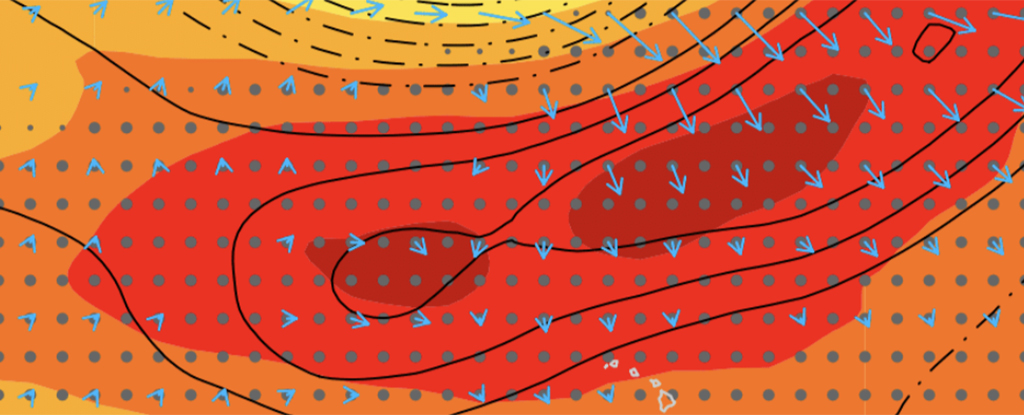Abnormally warm patches of water in the Pacific Ocean, often referred to as ‘blobs’, have been having a disastrous effect on marine ecosystems since 2010. Now we may know what’s causing them to keep appearing.
A new study from an international team of researchers, and involving some detailed computer simulations, has linked the blobs to a reduction in aerosol emissions in China – so a policy designed to improve environmental conditions may have also come with negative consequences attached.
The reason is that these tiny airborne particles released by factories and power plants do a very good job at reflecting sunlight back into space, and keeping our atmosphere cooler.
Without that cover, the Pacific is more exposed to heat from the Sun, which combines with increasing heat from human-made global warming.
“We find that the rapid aerosol abatement in China triggers atmospheric circulation anomalies beyond its source region, driving a substantial mean surface warming in the Northeast Pacific, which provides a favorable condition for extreme ocean warming events,” the researchers write in their paper.
We know that the different pieces of clean air legislation introduced in China in the 2010s have worked well, in terms of reducing the level of pollutants being sent into the air, and improving air quality as a result. Between 2006 and 2017, for example, sulfur dioxide emissions were cut by around 70 percent.
Here, the researchers used existing climate models to predict heat in the Pacific Ocean, using different values for China emissions to compare the consequences. The models that matched the real-world emission reductions showed hotspots in the northeastern Pacific, where the blobs have been concentrated.
It’s not just the direct radiative effects of the aerosols that are at play though, the team suggests. It’s likely that a chain reaction of warming due to the aerosols’ absence helped to shift weather systems, reducing the speed of winds over particular regions in the Pacific, and making patches of ocean overheat to an even greater degree.
As ever with these complex meteorological systems, there are multiple factors at play besides natural variation – while it’s not just emission reductions in China that’s causing this, they do seem to be making these incidents more likely, and contributing to the warming trend.
These blobs have led to deaths of fish, seabirds, and other marine life on a massive scale, as well as toxic algae blooms that can further damage ecosystems as they block sunlight and consume oxygen.
It’s another example of the incredibly delicate balances and the vast number of influencing factors being worked out all across our warming planet – and we need all of this information to understand what’s going to happen next.
“Our findings provide an important insight into the mechanisms of the North Pacific ocean-atmosphere changes, highlighting the need to consider the exacerbated risks arising from a reduction in anthropogenic aerosol emissions in assessment of climate change impacts,” write the researchers.
The research has been published in PNAS.





